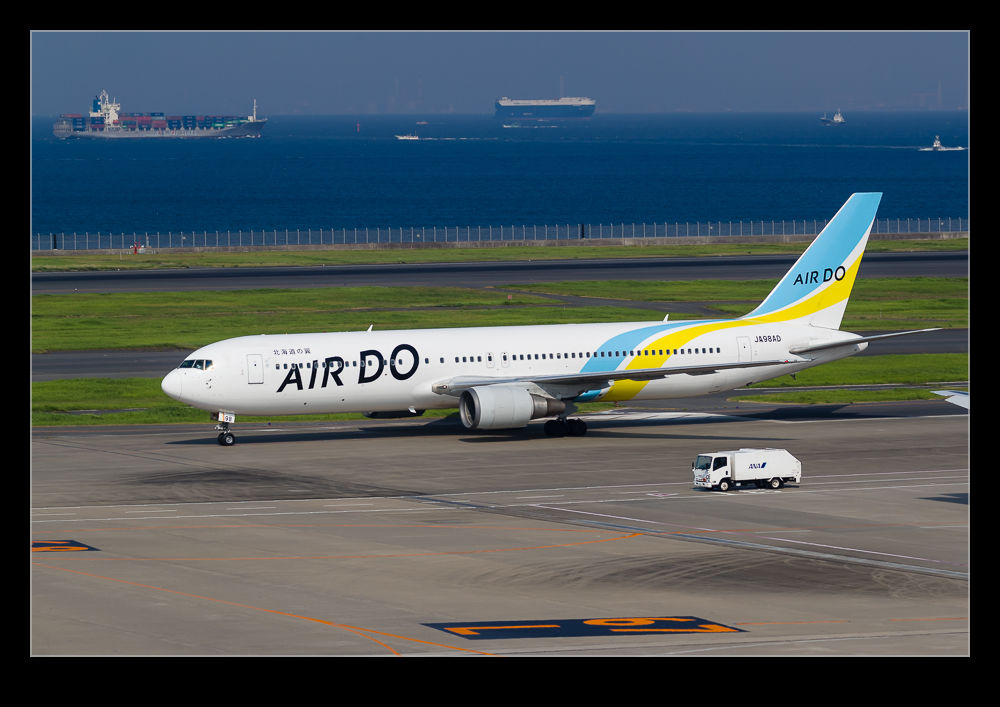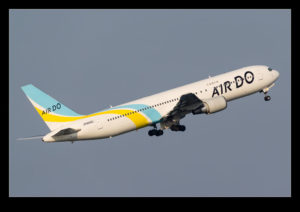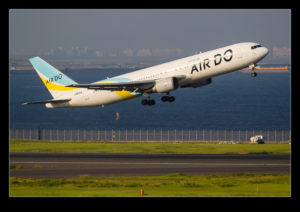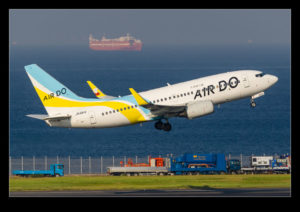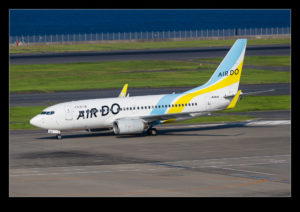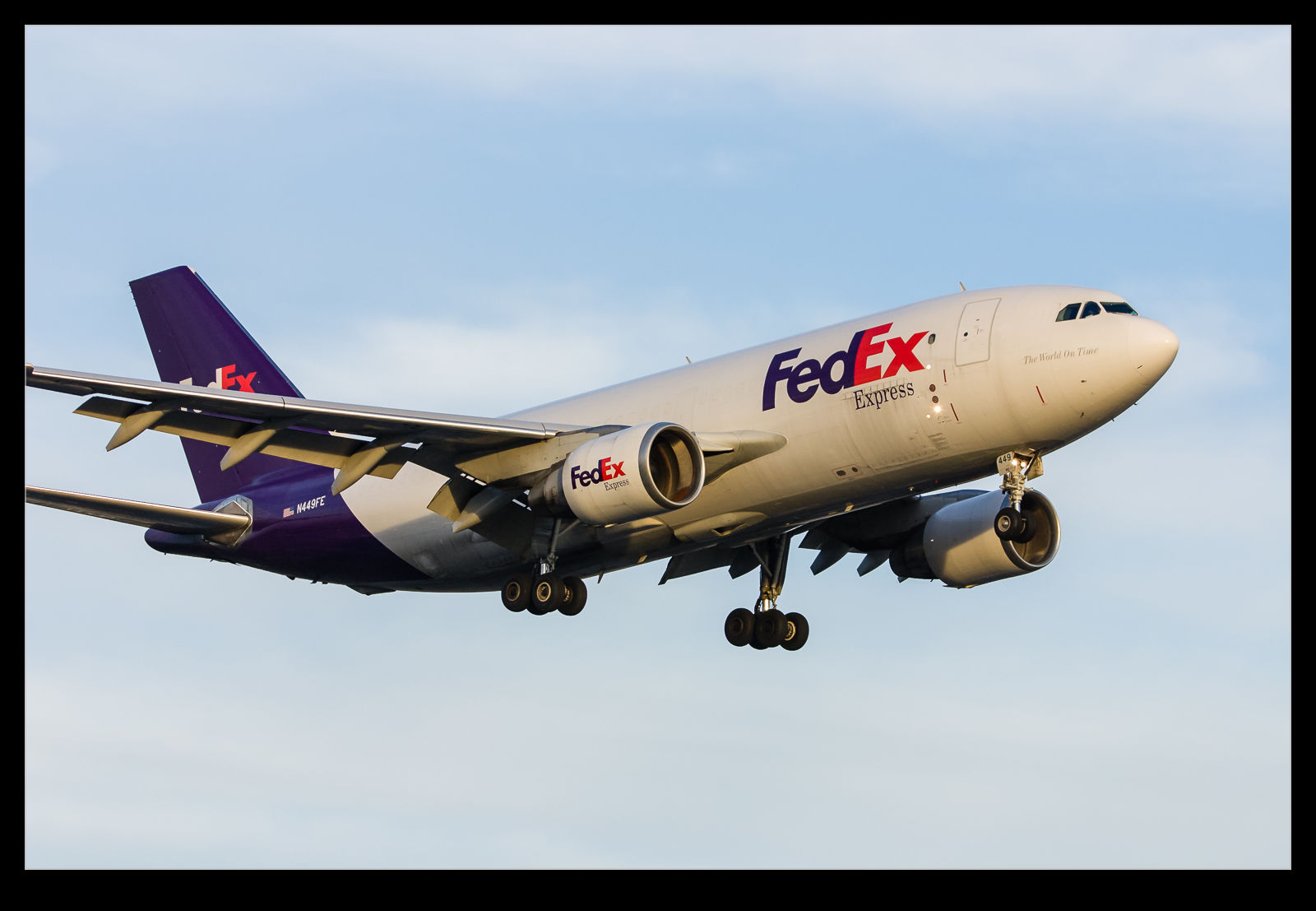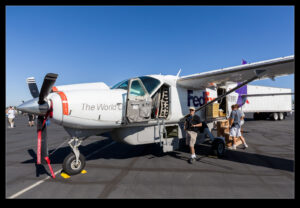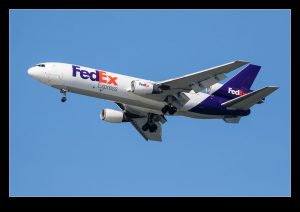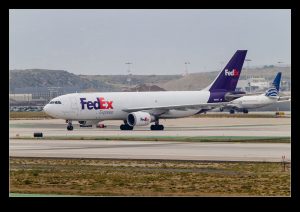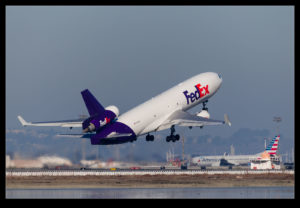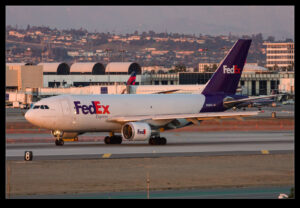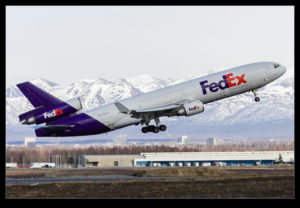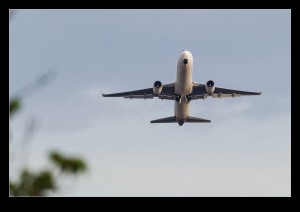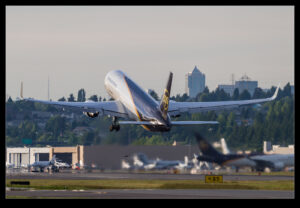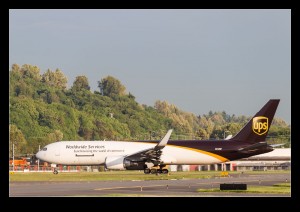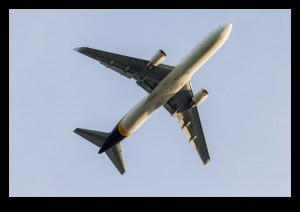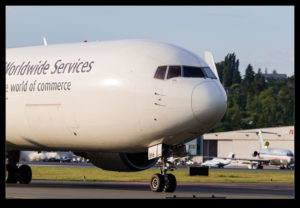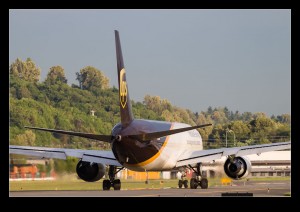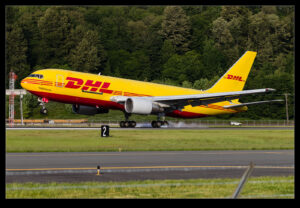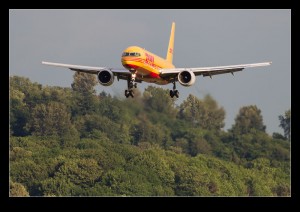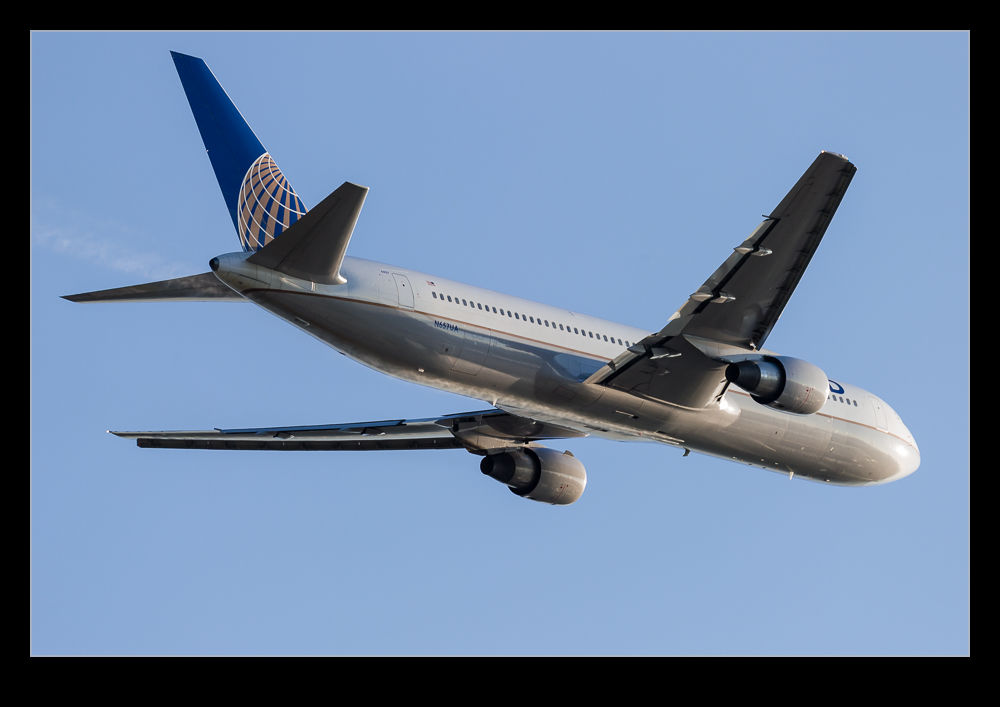 Prior to the KC-46 Pegasus, Boeing had another go at selling the 767 to the USAF as a tanker. The aircraft that they had intended to be the solution at that point was a different configuration to what ultimately made its way in to the inventory. They went as far as building a speculative airframe for the project. However, when the project was aborted (for reasons that are far too complex for a simple blog post), the airframe lay unfinished. It was stored for a while at Paine Field before eventually being scrapped. Here is a shot of it prior to its demise.
Prior to the KC-46 Pegasus, Boeing had another go at selling the 767 to the USAF as a tanker. The aircraft that they had intended to be the solution at that point was a different configuration to what ultimately made its way in to the inventory. They went as far as building a speculative airframe for the project. However, when the project was aborted (for reasons that are far too complex for a simple blog post), the airframe lay unfinished. It was stored for a while at Paine Field before eventually being scrapped. Here is a shot of it prior to its demise.
Tag Archives: 767
Air Do
 Haneda introduced me to a new airline. Air Do. They had a lot of traffic coming through Haneda, both narrowbody and widebody. In fact, one of their 767s took off in great light as I was walking to the viewing terrace which was a touch frustrating. It was a long time before another one took off but at least the evening light improved so the wait was worthwhile. Meanwhile, the 737s were busy and some 767s taxied past after landing so I got to see a few of them in action.
Haneda introduced me to a new airline. Air Do. They had a lot of traffic coming through Haneda, both narrowbody and widebody. In fact, one of their 767s took off in great light as I was walking to the viewing terrace which was a touch frustrating. It was a long time before another one took off but at least the evening light improved so the wait was worthwhile. Meanwhile, the 737s were busy and some 767s taxied past after landing so I got to see a few of them in action.
Cargojet Pairing
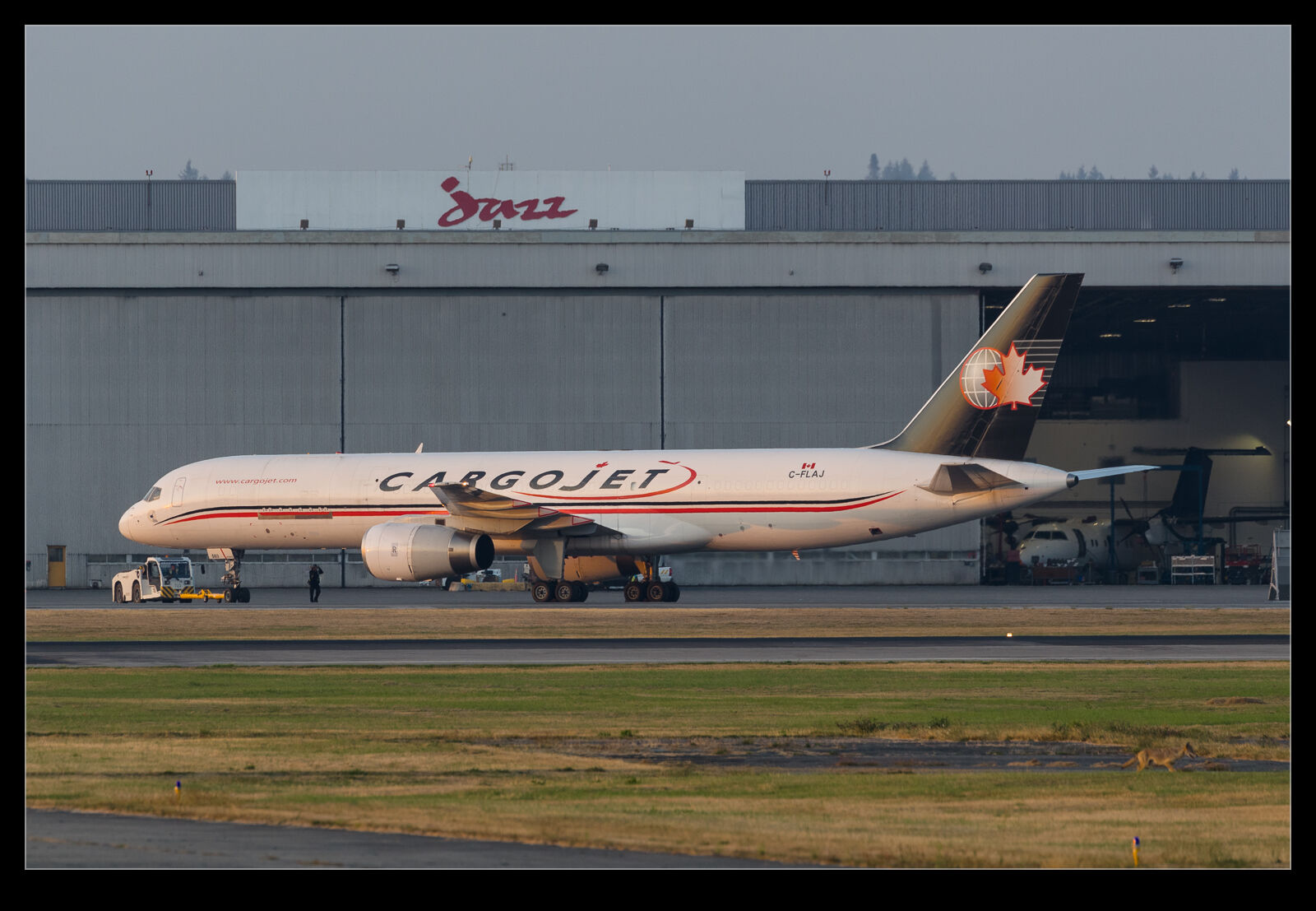 Freighter use is the great second chance for older airliners. It is also a nice source of something different with the number of airlines shrinking as mergers and bankruptcies take their toll. Cargojet is a Canadian freight operator that has a contract moving mail for Canada Post. When I was at Vancouver, there were a couple of Cargojet aircraft on the ramp across from where we were. One was a 767 and the other was a 757. They were being loaded when I arrived and, as the evening light drew in, the first jet taxied.
Freighter use is the great second chance for older airliners. It is also a nice source of something different with the number of airlines shrinking as mergers and bankruptcies take their toll. Cargojet is a Canadian freight operator that has a contract moving mail for Canada Post. When I was at Vancouver, there were a couple of Cargojet aircraft on the ramp across from where we were. One was a 767 and the other was a 757. They were being loaded when I arrived and, as the evening light drew in, the first jet taxied.
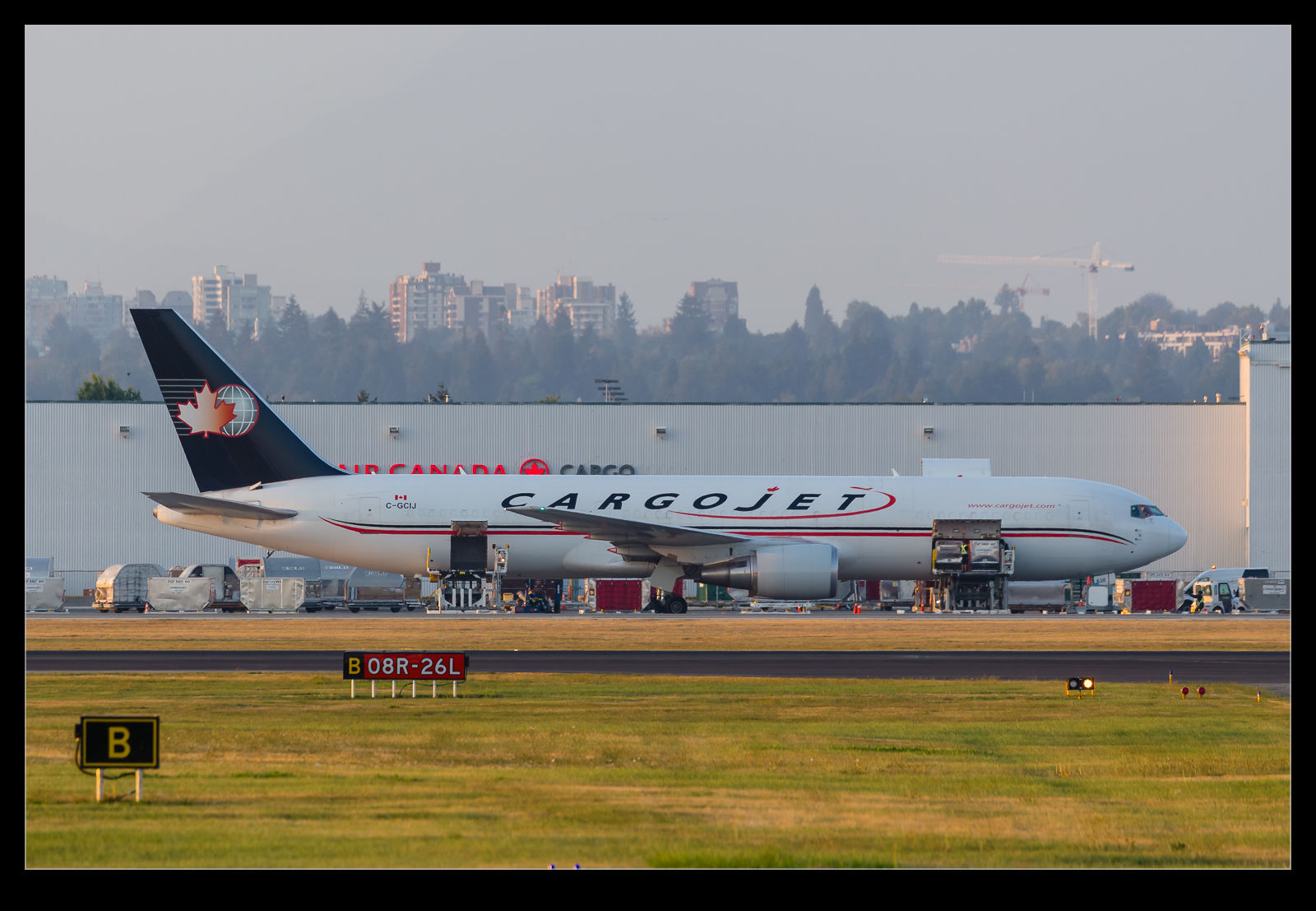 It was getting pretty dark by the time they got airborne. However, I was not complaining since I was able to get another airline in operation that I had not seen before.
It was getting pretty dark by the time they got airborne. However, I was not complaining since I was able to get another airline in operation that I had not seen before.
Zoomify the Boeing Flightline
Everett is a busy production facility. 787s are being built at a fair rate while 777 production continues, albeit at a reducing pace. There are some 747s and 767s coming out as well. The flightline for their testing is consequently rather full. I figured a panorama was a good idea but they are hard to put on the blog without making them too small. Time for zoomify again. You can pan around and zoom in to see what was on the line this day.
FedEx Fleet Types
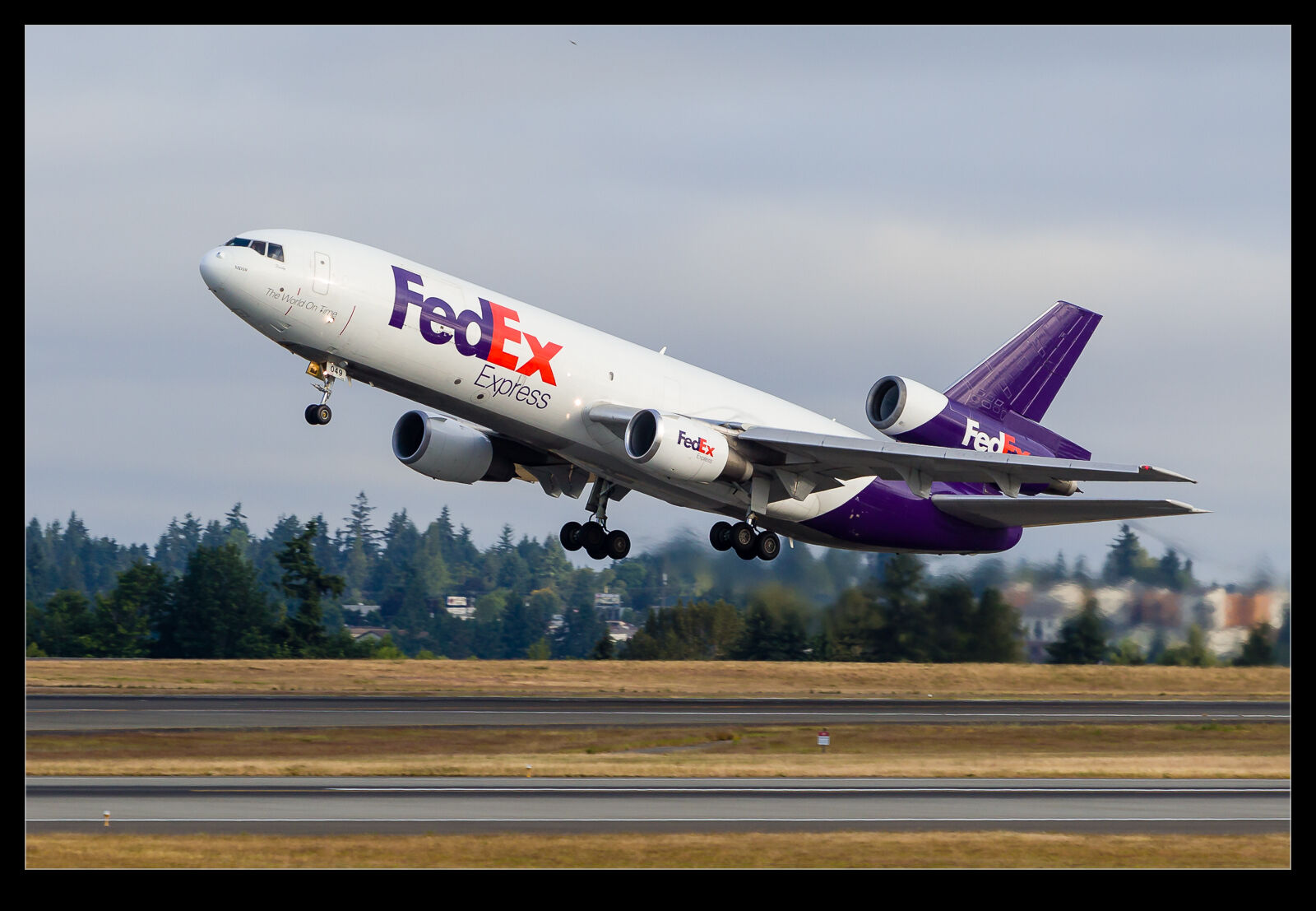 Flipping through various shoots looking for something else, I happened to come across a few shots of aircraft from the FedEx fleet. It occurred to me that I could drag together a post that was focused purely on the FedEx aircraft types. FedEx has an extensive fleet of aircraft these days. Their early days of using Falcon 20s to move their packages around are long gone. Now they have a variety of aircraft types of different sizes and range to meet all of their needs.
Flipping through various shoots looking for something else, I happened to come across a few shots of aircraft from the FedEx fleet. It occurred to me that I could drag together a post that was focused purely on the FedEx aircraft types. FedEx has an extensive fleet of aircraft these days. Their early days of using Falcon 20s to move their packages around are long gone. Now they have a variety of aircraft types of different sizes and range to meet all of their needs.
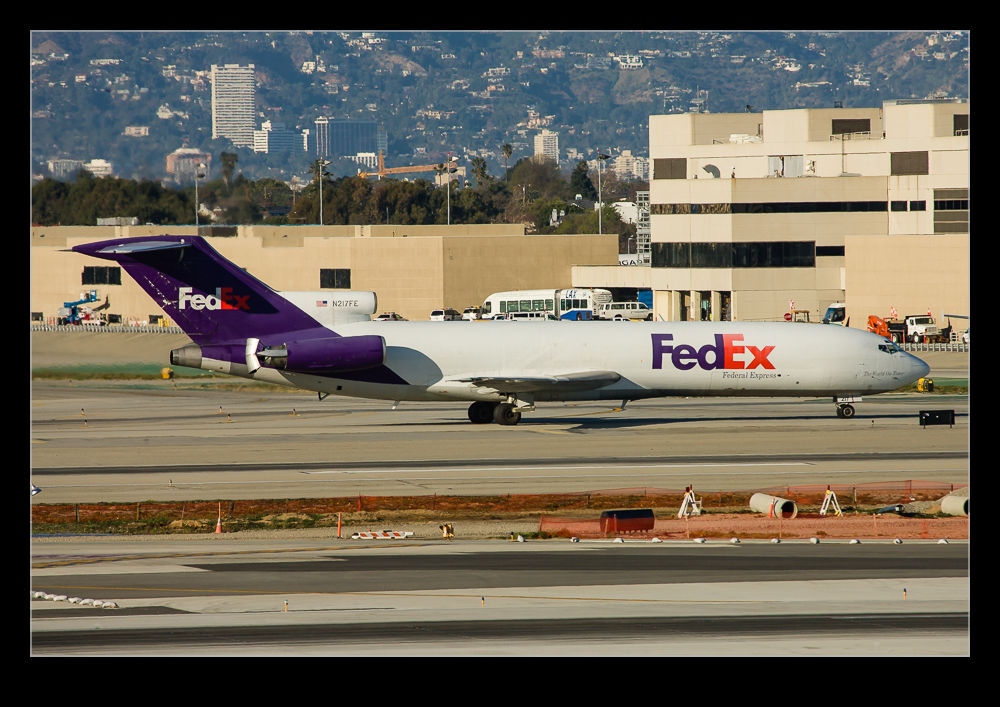 The fleet is constantly in a state of regeneration. The types that have long been a part of FedEx operations are now going or gone and being replaced with something more up to date. The 727 fleet has gone. The A300s and A310s are still in use but the number in the fleet is gradually going down. The interesting thing about the FedEx fleet is the way the economics are changing. For a long time, second hand jets that had been retired from airline service made a lot of sense. The operating model involves a lot of jets flying from their home base to Memphis in the middle of the night to deliver packages to the hub. Then, after a quick turnaround of all of the sorted packages, the planes fly back to base. Then they sit on the ground for most of the day.
The fleet is constantly in a state of regeneration. The types that have long been a part of FedEx operations are now going or gone and being replaced with something more up to date. The 727 fleet has gone. The A300s and A310s are still in use but the number in the fleet is gradually going down. The interesting thing about the FedEx fleet is the way the economics are changing. For a long time, second hand jets that had been retired from airline service made a lot of sense. The operating model involves a lot of jets flying from their home base to Memphis in the middle of the night to deliver packages to the hub. Then, after a quick turnaround of all of the sorted packages, the planes fly back to base. Then they sit on the ground for most of the day.
 This model means that utilization for the aircraft is low. Having a less efficient jet is not a problem when it only flies a few hours each day. If it is cheap to buy, you can use it efficiently. Having a bunch of inefficient 727s works very well. Similarly, the smaller aircraft that feed into hubs also can be operated relatively cheaply. A fleet of Cessna Caravans that sit on the ground or a bunch of ATR42s is effective.
This model means that utilization for the aircraft is low. Having a less efficient jet is not a problem when it only flies a few hours each day. If it is cheap to buy, you can use it efficiently. Having a bunch of inefficient 727s works very well. Similarly, the smaller aircraft that feed into hubs also can be operated relatively cheaply. A fleet of Cessna Caravans that sit on the ground or a bunch of ATR42s is effective.
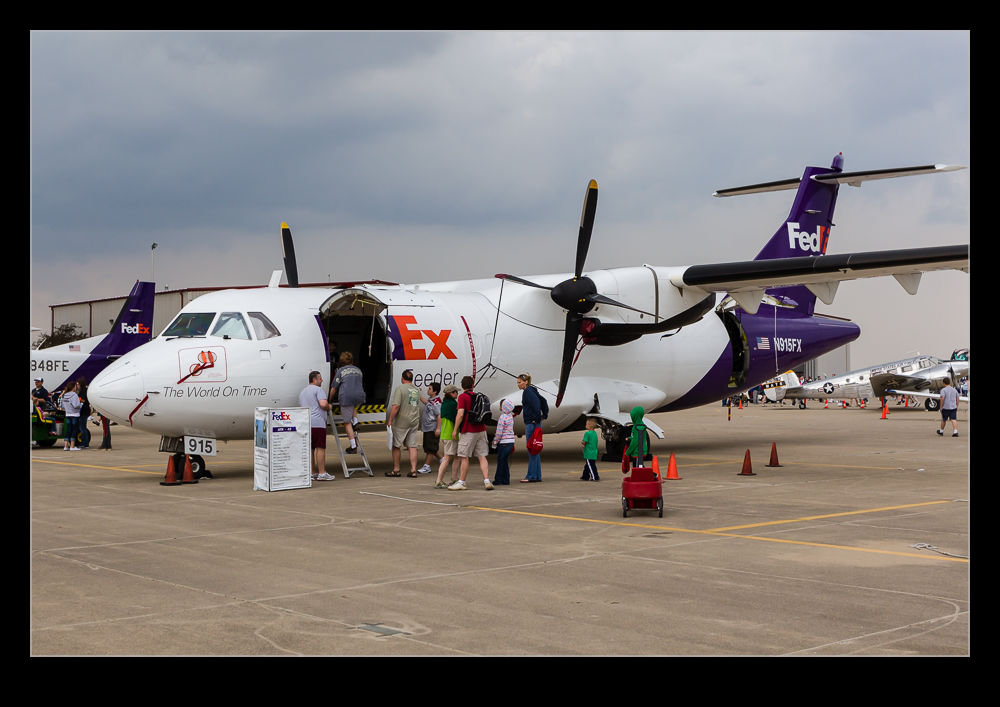 The 727s are gone now. They have been replaced with 757s which have all been retired by airline operators (a lot of them from British Airways).The big change is that new jets are being acquired. The operating economics for FedEx have changed. The DC-10s (which got upgraded to MD-10s) are gradually being replaced by new 767s. Meanwhile, the MD-11s which had previously been the kings of the long haul flights are now being relegated to domestic service while the 777F takes over the long haul missions. Direct from Memphis to China is now the norm for the 777F. You don’t see MD-11s crossing the Pacific as much any more. I think the Europe runs are limited too. The 777 can go direct with a decent payload and doesn’t need to stop for fuel in Anchorage.
The 727s are gone now. They have been replaced with 757s which have all been retired by airline operators (a lot of them from British Airways).The big change is that new jets are being acquired. The operating economics for FedEx have changed. The DC-10s (which got upgraded to MD-10s) are gradually being replaced by new 767s. Meanwhile, the MD-11s which had previously been the kings of the long haul flights are now being relegated to domestic service while the 777F takes over the long haul missions. Direct from Memphis to China is now the norm for the 777F. You don’t see MD-11s crossing the Pacific as much any more. I think the Europe runs are limited too. The 777 can go direct with a decent payload and doesn’t need to stop for fuel in Anchorage.
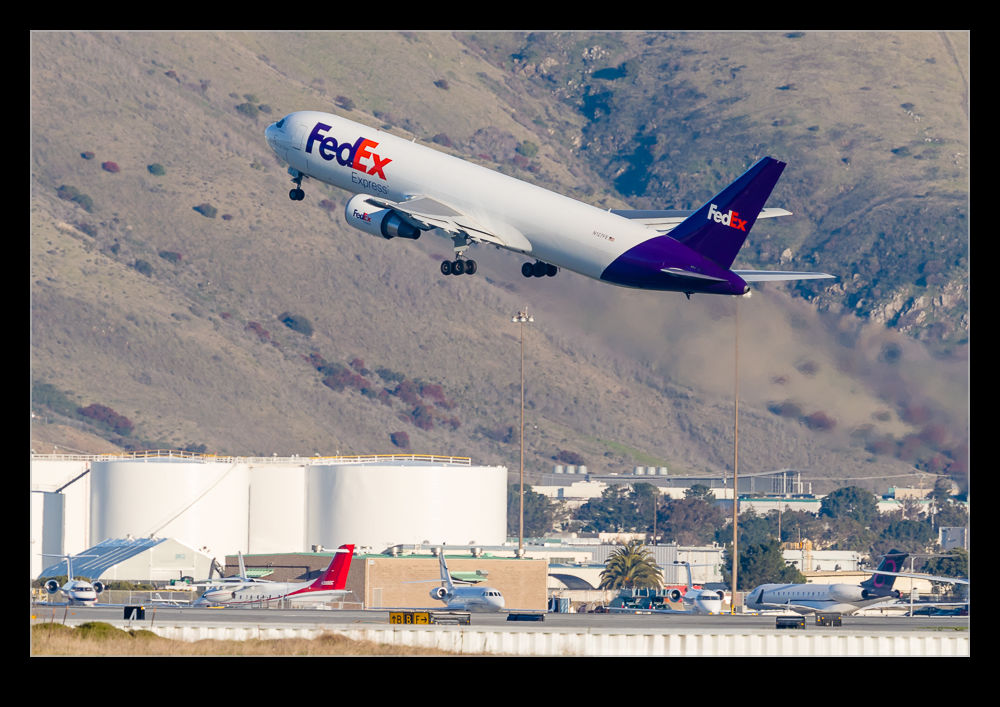 The MD-11 will survive for a while yet. Its less efficient operate will mean it can be pushed onto shorter segments with lower utilization. The high utilization missions will be the preserve of the newer jets. The older jets will be fine on the flights that only involve a couple of trips a day. For these their low capital costs will offset any operational cost penalty. The migration of the fleet will continue though. Soon it will be a fleet with a few less types and things will be a bit less interesting. There will still be a bunch of 727s scattered around airports that had them donated though so keep an eye out for them.
The MD-11 will survive for a while yet. Its less efficient operate will mean it can be pushed onto shorter segments with lower utilization. The high utilization missions will be the preserve of the newer jets. The older jets will be fine on the flights that only involve a couple of trips a day. For these their low capital costs will offset any operational cost penalty. The migration of the fleet will continue though. Soon it will be a fleet with a few less types and things will be a bit less interesting. There will still be a bunch of 727s scattered around airports that had them donated though so keep an eye out for them.
UPS Movements
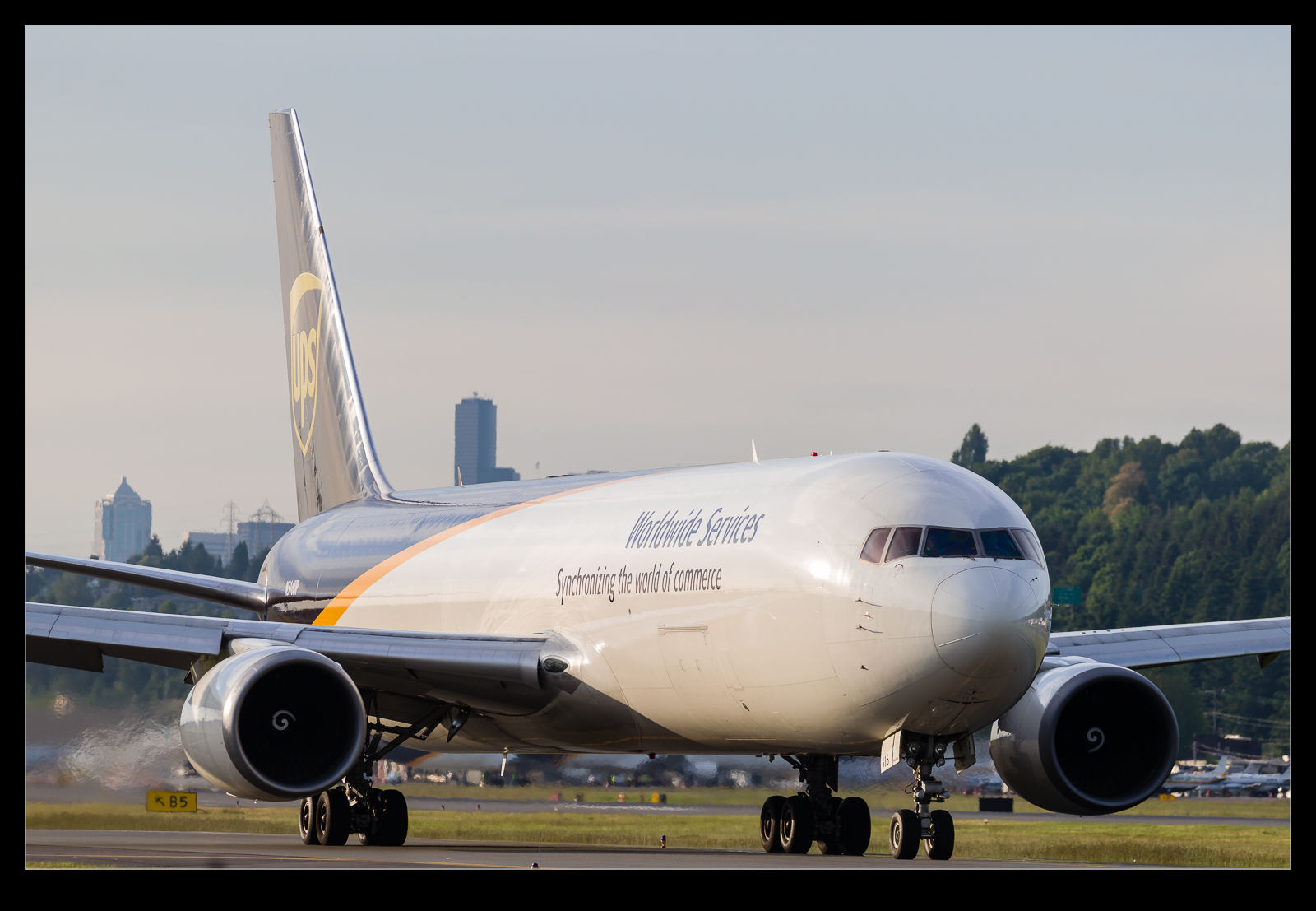 Boeing Field is a busy location for UPS. FedEx run their Seattle operations from SeaTac but UPS has made King County their location of choice. You get a busy period in the evening with arrivals and departures in a pretty narrow window. Provided there is evening light, you can get a lot of movements.
Boeing Field is a busy location for UPS. FedEx run their Seattle operations from SeaTac but UPS has made King County their location of choice. You get a busy period in the evening with arrivals and departures in a pretty narrow window. Provided there is evening light, you can get a lot of movements.
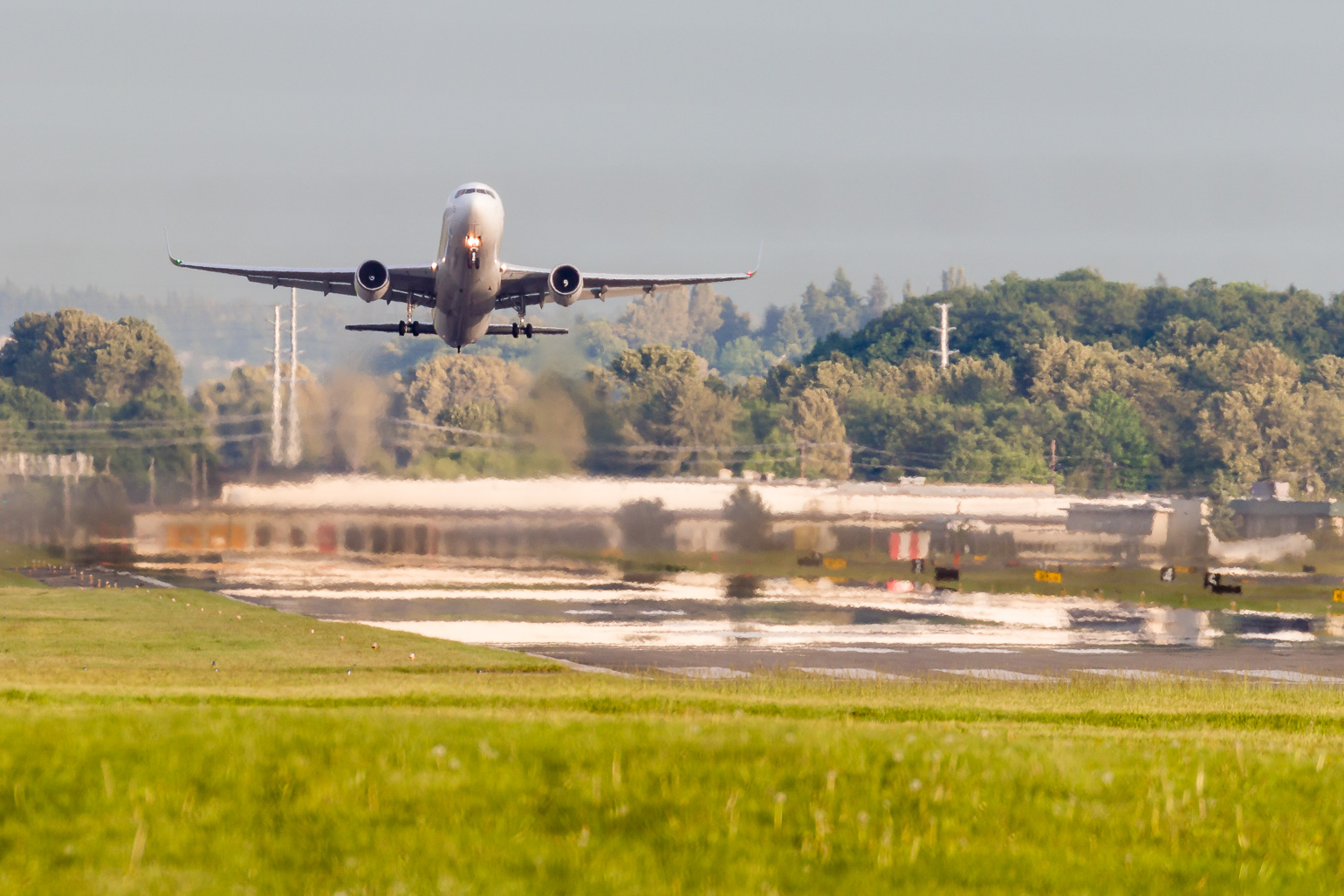 I have shot a bunch of their jets over the course of various visits. Usually I get them arriving and departing from the same location. I did get some familiar shots this time but I also decided to head to the other end of the field and shoot the departure head on. They do get airborne pretty quickly and climb quite fast so they rotate a long way off and are well above you by the time they cross the fence. Not ideal but still a bit of variety for me.
I have shot a bunch of their jets over the course of various visits. Usually I get them arriving and departing from the same location. I did get some familiar shots this time but I also decided to head to the other end of the field and shoot the departure head on. They do get airborne pretty quickly and climb quite fast so they rotate a long way off and are well above you by the time they cross the fence. Not ideal but still a bit of variety for me.
DHL Freighters
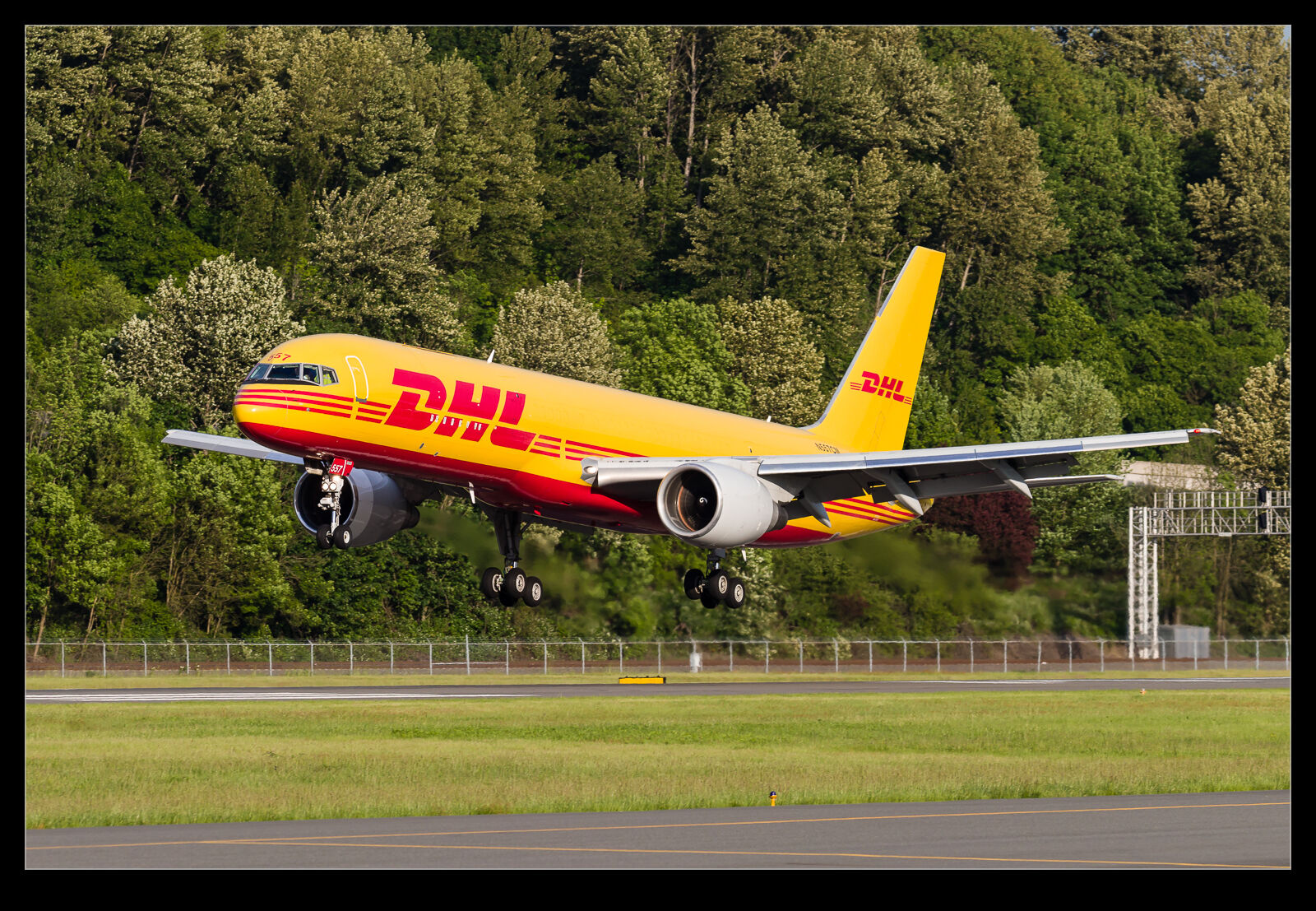 DHL planes are hard to miss. The bright yellow livery they carry is not one that you are going to miss easily. They may not have the wide reach of FedEx or UPS in the US but Boeing Field is a regular stop for them. The 767 is one of their staples, much as it is for all express carriers. They also make use of the 757 which pleases me given my fondness for the first airliner I ever flew on.
DHL planes are hard to miss. The bright yellow livery they carry is not one that you are going to miss easily. They may not have the wide reach of FedEx or UPS in the US but Boeing Field is a regular stop for them. The 767 is one of their staples, much as it is for all express carriers. They also make use of the 757 which pleases me given my fondness for the first airliner I ever flew on.
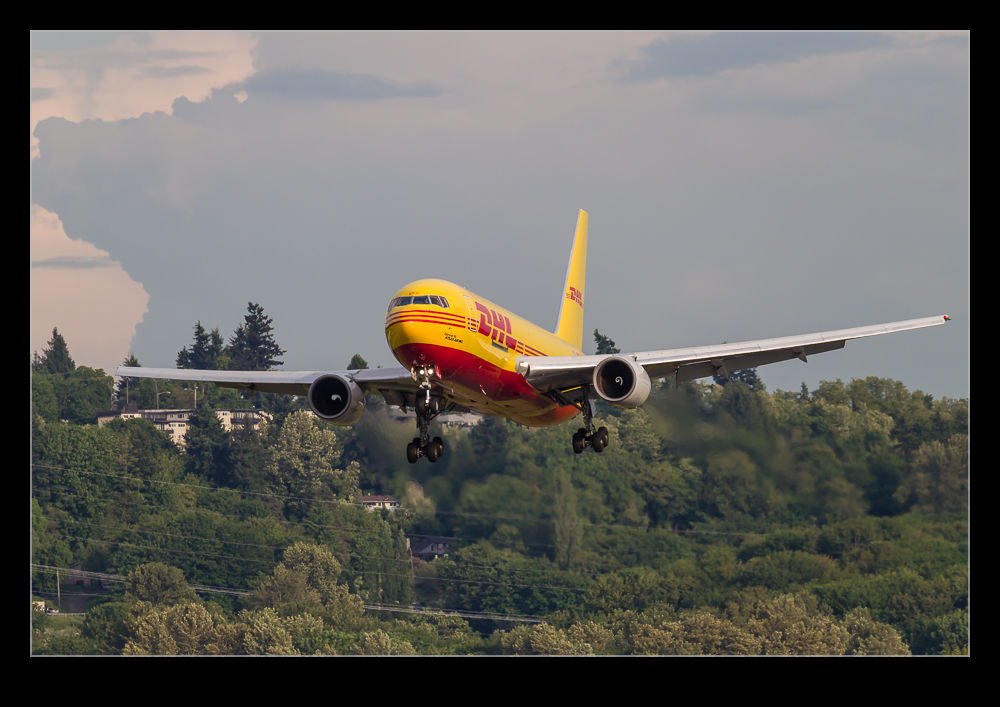 Evening light is the best for getting a DHL jet since the yellow positively glows when the low sun gets on it. I had a bit of traffic during this visit and these are the jets I saw.
Evening light is the best for getting a DHL jet since the yellow positively glows when the low sun gets on it. I had a bit of traffic during this visit and these are the jets I saw.
What is Happening on This 767?
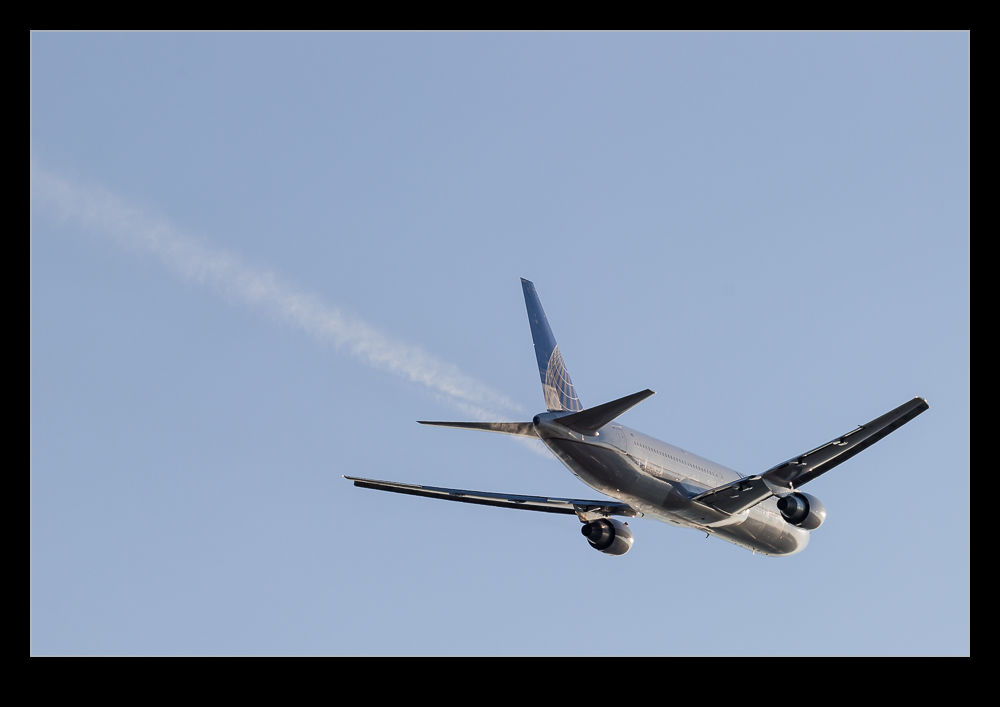 Every once in a while you see something and you have no idea what is going on. As a United 767 climbed out from O’Hare, it was streaming something from the fuselage. I saw it through the viewfinder at the time and figured it would be obvious what it was when I looked at the pictures. It turns out I still don’t know what was happening. Anyone reading this that has any ideas, please let me know what you think.
Every once in a while you see something and you have no idea what is going on. As a United 767 climbed out from O’Hare, it was streaming something from the fuselage. I saw it through the viewfinder at the time and figured it would be obvious what it was when I looked at the pictures. It turns out I still don’t know what was happening. Anyone reading this that has any ideas, please let me know what you think.
Pegasus
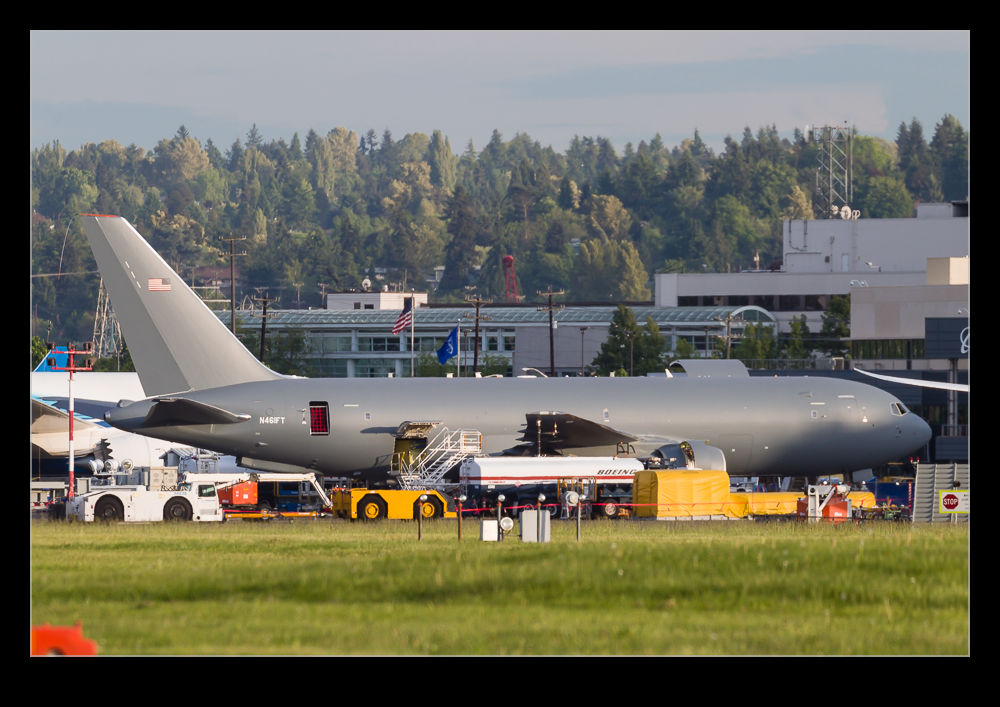 Some programs always seem to be trouble. Boeing’s efforts to turn the 767 into a tanker have not been smooth over the years. The original versions were a single boom tanker for Japan which was not too late. The three point version for Italy was a far more difficult affair and was several years late. When the USAF was after a new tanker, Boeing initially lost out to Airbus with their A330 based offer. A successful protest and s new competition followed and this time Boeing won.
Some programs always seem to be trouble. Boeing’s efforts to turn the 767 into a tanker have not been smooth over the years. The original versions were a single boom tanker for Japan which was not too late. The three point version for Italy was a far more difficult affair and was several years late. When the USAF was after a new tanker, Boeing initially lost out to Airbus with their A330 based offer. A successful protest and s new competition followed and this time Boeing won.
Whether winning was good for them remains to be seen. The contract involves a cap on cost growth after which Boeing picks up all of the overrun. Supposedly they are already past that point so the split on overrun costs is now all theirs. Combine that with messing up the wiring and having to wire the flight test jets and you will see why the flight test program is behind schedule. The first of the four development jets flew last year in a civil configuration without the refueling equipment. It has since been on the ground at Boeing Field for further work. Very recently it took to the air again. Shortly before that, I passed by and saw it parked up on the Boeing ramp.
We shall see whether Boeing can pull back some of the delays and get the minimum number of jets into service by the contractual deadline. Whatever happens, I imagine these jets are going to become a lot more familiar in the coming years.
